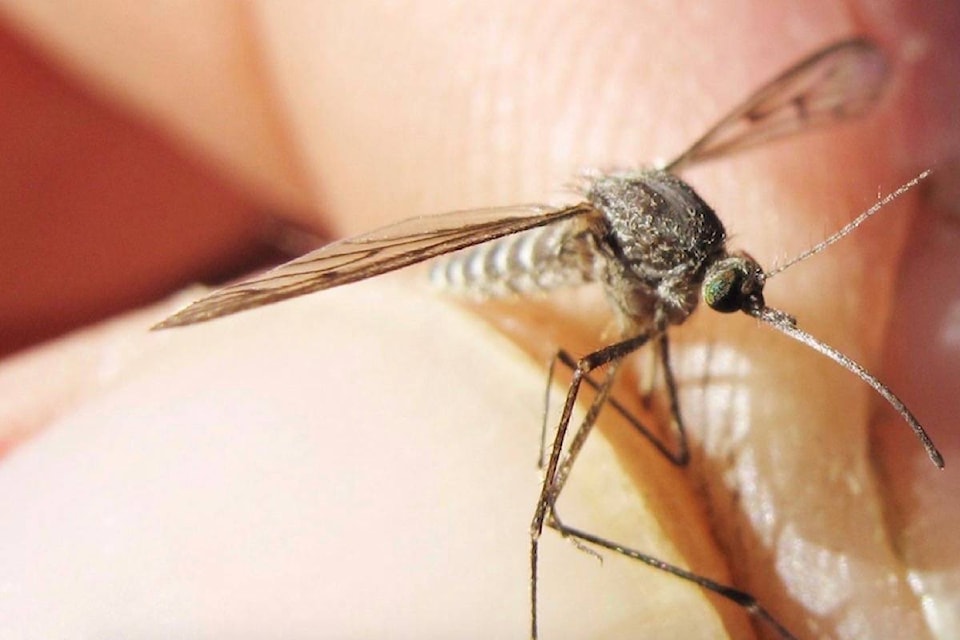Watch out — West Nile-carrying mosquitoes could soon be coming our way, an Olds College bug expert warns.
The warmer temperatures that are forecast for next week will create what we haven’t had so far this summer — the right breeding conditions for the kind of mosquito that carries the West Nile virus.
Ken Fry, who teaches integrated pest management in horticulture at Olds College, said the culex tarsalis mosquitoes, which can infect people with the potentially serious virus, is less common in this area than more innocuous mosquito species.
The less threatening mosquitoes will lay eggs in depressions in farmyards and other shallow water bodies. But the virus-carrying culex tarsalis mosquitoes count on more rainfall to fill up wetlands and permanent sloughs.
They also require sunshine and warmth to complete their growth cycle, said Fry — which is why they haven’t been very present so far this cool summer.
Another mitigating factor is the extra-cold temperatures last February. Fry said this could have killed off some of the over-wintering mosquito eggs, leaving fewer larvae to grow into adults this spring.
But our low mosquito counts are expected to change next week, when temperatures in the Red Deer area are anticipated to climb into the mid-20s — reaching a forecast high of 27 C on Tuesday. Showers are also predicted on at least two days.
Fry advises central Albertans to take precautions — such as wearing long sleeves and pants whenever possible, or applying mosquito repellent. (He notes repellent should not be used on infants and applied sparingly on small children).
Mosquitoes are mostly active at dawn or dusk or in forests and high grasses. He warns that mid-July to mid-August is the highest risk time for catching the West Nile virus.
Fry adds that culex tarsalis mosquitoes are darker brown than other species in the area, but the difference will not be visible to the naked eye.
Most Albertans who become infected are from the province’s southeastern grasslands, which have more reliable wet, warm summers.
According to Health Canada’s West Nile virus surveillance website, three people in Alberta’s central zone caught the virus in 2018, compared to seven in Calgary and 40 in the southern zone. (There were zero cases in Edmonton and the north zone.)
West Nile virus is transmitted to humans primarily through the bite of an infected mosquito. The virus can affect anyone, with one in five infected people becoming ill.
Severe neurological illness is rare, but risk increases with age, according to Health Canada.
The first evidence of the West Nile virus in Alberta was confirmed in 2003.
Each year, the Alberta government conducts “passive surveillance” for this virus in humans through public health laboratories and Canadian Blood Services.
Veterinarians and animal health laboratories also report cases of the virus identified in horses.
lmichelin@reddeeradvocate.com
Like us on Facebook and follow us on Twitter
